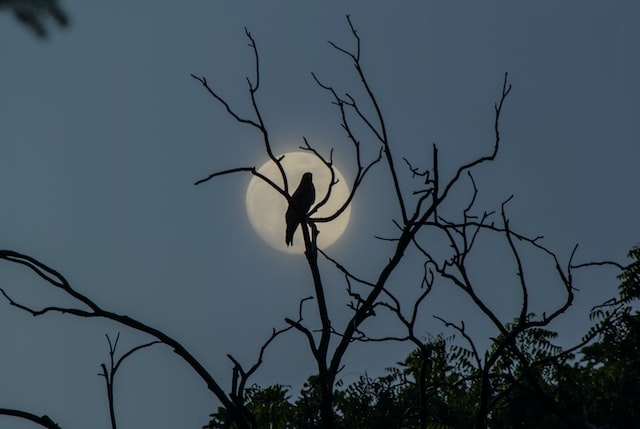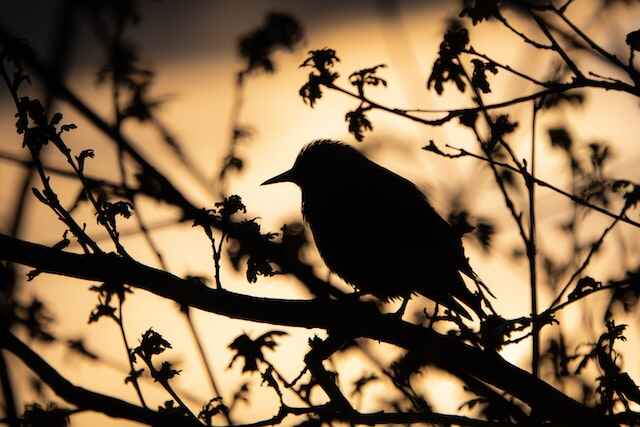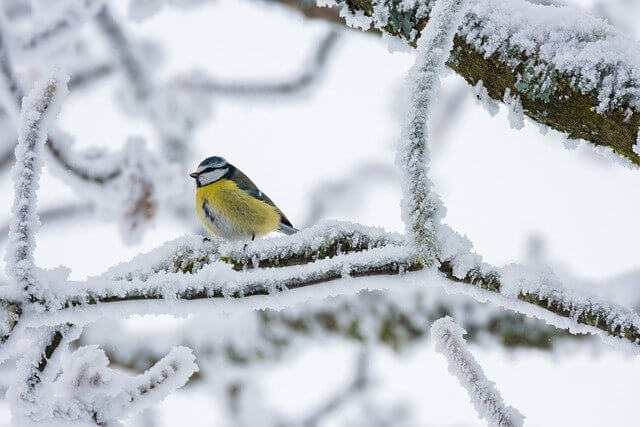Have you ever wondered, do birds fly at night? The answer is yes, but it depends on the species. While most birds are diurnal (active during the day), some species, like owls and certain migratory birds, are nocturnal and do fly at night to hunt or travel long distances. In this article, we’ll explore which birds fly at night and the reasons behind their nighttime activity.
Table of Contents
- 1 Is it normal to see a bird at night?
- 2 What types of birds fly at night?
- 3 Do migrating birds fly at night?
- 4 What does it mean to see a bird fly at night?
- 5 Where do birds go in the nighttime?
- 6 Why do birds freak out at night?
- 7 Why would a sparrow fly at night?
- 8 Do birds shut down at night?
- 9 At what time do birds go to sleep?
- 10 What happens when you hear a bird at night?
- 11 Can birds see in the dark?
- 12 Where do birds go when it rains?
- 13 Where do birds go to sleep?
- 14 How long do birds sleep at night?
- 15 How do small birds sleep at night?
- 16 What do birds do to stay warm at night?
- 17 How do birds keep warm in freezing weather?
- 18 Author
Is it normal to see a bird at night?
Most birds fly during the day, but some species of bird have evolved to live at night. Nocturnal birds like owls and nighthawks hunt at night. It’s not common for other types of birds to fly at night unless they are under distress, bothered or scared off by a person or animal.
If you see a bird flying during the evening hours it may be looking for another safe spot nearby in order to roost or avoid predators that come out only after dark.
What types of birds fly at night?
There are many types of birds that fly at night. They include swifts, owls, woodpeckers, nighthawks and night-herons. Nocturnal birds such as these are most active during the night and have adapted to hunting in darkness because they use their vision less than diurnal (daytime) birds do.
Some examples of nocturnal species include the Chimney Swift, Great Horned Owl, Northern Flicker Woodpecker, and Common Nighthawk.
Do migrating birds fly at night?
Migrating birds tend to fly during the night when the air is cooler, calmer and more stable. This helps them to conserve energy and stay on course. Flying at night also reduces the risk of predation, as there is less light for predators to spot them. During the day, birds tend to avoid flying during the hottest hours, which would require them to expend a lot of energy.
At night, the cooler air also allows birds to fly farther distances before they need to refuel. Migrating birds use a combination of celestial navigation, topographic landmarks, and the earth’s magnetic field to orient themselves and find their way. Flying at night gives them a chance to use the stars to map out the most efficient course.
In addition, the reduced noise of the night helps birds to better hear their flock mates and stay together. This is especially important in larger groups, as the group can stay together and work together more efficiently to find food, rest spots, and other resources. Finally, migrating birds also use the nighttime for rest and recovery.
After a long day of flight, the birds can take advantage of the cooler air to rest and recharge. During the day, the birds are more likely to be exposed to predators, so resting at night is safer for them. By flying at night, birds can also take advantage of thermals, which are columns of rising air that can help them gain more lift and travel farther distances with less effort.
What does it mean to see a bird fly at night?
Seeing a bird fly at night can be a mysterious sight, especially if it is a species of bird that is not typically active at night. It might mean that the bird is migrating, since many bird species migrate to warmer climates during the winter months.
If this is the case, the bird is likely on a long journey in search of a new home. On the other hand, the bird could have been disturbed from its resting place and forced to fly away from its previous location.
In either case, the sight of a bird flying in the night sky can be both beautiful and mysterious. It is a reminder of the power of the natural world and the incredible journeys that birds take in order to survive and thrive.
Where do birds go in the nighttime?
At night, birds go through a process known as roosting. Roosting is when birds go to a specific area to rest and wait out the night. They typically choose sheltered spots that are safe from predators and provide protection from the cold and harsh elements. Popular roosting spots can include trees, shrubs, buildings, bridges, and even abandoned structures.
Some birds even choose to roost in flocks, huddling together for warmth and protection. Birds will often return to the same roost each night, but they may also move around depending on the season and amount of food available.
During the winter, birds may travel miles in search of warmer roosting spots or better food sources. Roosting is an important part of the bird’s life cycle, and it is essential for birds to be able to find safe, comfortable spots to rest and spend the night.
Why do birds freak out at night?
Birds are naturally inclined to be most active during the daytime. This is due to the fact that there is more light and visibility during the day, which allows them to spot predators, find food, and build nests more easily.
At night, their sense of sight begins to diminish significantly, and this can make them feel much more vulnerable. Additionally, there are typically more predators active at night, and the lack of visibility means that birds can’t easily spot them in order to take evasive action.
Furthermore, the darkness can cause birds to become disoriented and confused, making it harder for them to find their way back to their nests. For these reasons, birds often become more alert and scared at night, leading them to make noise and take flight.
Why would a sparrow fly at night?
A sparrow flying at night can be a beautiful sight to behold. There are many reasons why a sparrow may choose to fly during the night. The most common reason is that the sparrow may be migrating from its summer breeding ground to its winter habitat. During migration, sparrows often fly at night to avoid the heat of the day and the risk of predation. Additionally, sparrows may fly at night in search of food.
Many nocturnal insects become active at night, providing the sparrow with a source of food. Furthermore, sparrows may fly at night to avoid competition from other birds. At night, the skies are less crowded and sparrows can forage for food without having to compete with other birds.
Finally, sparrows may fly at night during breeding season to find a mate or defend their territory. During the breeding season, sparrows that sing loud and long are more likely to find and attract a mate.
Furthermore, sparrows that remain vigilant and defend their territory during the night are better able to protect their nests from predators. Ultimately, there are many reasons why a sparrow may choose to fly at night, and each reason is unique to the individual sparrow.
Do birds shut down at night?
Birds go through a period of torpor, or inactivity, during the night. This period of reduced activity can be compared to what we humans experience when we sleep. During torpor, a bird’s heart rate and body temperature drop slightly, and they become less responsive to external stimuli.
This allows them to conserve energy and better survive in their environment. Birds may also fly to roost sites during the night to avoid predators. Roosting is the time when birds rest and sleep and is necessary for their survival.
While roosting, birds may appear to be asleep, but they are still conscious and alert to their environment. Roosting birds can quickly become active if they sense danger. Although they may not be active, they still need to be aware of their surroundings and be ready to fly away if needed.
At what time do birds go to sleep?
Birds sleep at various times during the day, this is because their body clock is not like humans, so they need to sleep at a time that’s best for them. Birds also tend to rest or sleep after long trips, because that’s when they expel more energy.
They also need more time for sleep than other animals because their flight muscles are continuously active while in flight. It is a misconception that birds do not sleep because they seem so active when you see them up close.
Some people think that birds have an extra bone called a “keel” in their breastbone which helps them fly, but this isn’t true either.
What happens when you hear a bird at night?
The cause of hearing a bird at night can be highly variable and dependent on the type of bird and the geographic location. In some cases, it may be due to a nocturnal bird species that is active during the night, such as owls or nightjars.
Alternatively, migratory birds may be passing through the area during the night and be heard during their flight. In other cases, it may be due to a bird that is simply out of its normal habitat, or perhaps is confused or disoriented.
It is also possible that birds may be heard at night due to artificial light sources, which can draw them in, or to loud noises that may cause them to seek out a safer location.
Finally, birds may be heard at night due to a disruption of their natural environment that encourages them to vocalize, such as an animal in the area or an increase in human activity.
Can birds see in the dark?
Can birds see in the dark? Many people are unaware that birds can see colors we cannot. They have a color vision similar to what humans would perceive as “night vision.” The color spectrum they can see is wider than ours, and it includes more shades of green and yellow-green.
They also have night vision capability that we don’t have: their eyes are equipped with reflective cells called tapetum lucidum which amplify light when it enters the eye.
This gives them a big advantage. They can also see in the dark better than we do because they have a higher concentration of rods and cones, which means more cells for sensing light.
Where do birds go when it rains?
When it rains, birds seek shelter in bushes and trees, and tall structures. Birds know where to go when it rains because they instinctively sense the weather coming. When thunderstorms are brewing or rain is imminent, they leave their perches and head for cover.
They might fly to a tree branch or under a leafy bush, but will be looking for a place that offers protection from the storm’s elements: heavy raindrops and harsh winds.
Birds also avoid flying directly into storms by changing directions, soaring higher up into the air until they get past the storm, then descending back.
Where do birds go to sleep?
Birds have an interesting sleeping habit, as they need to sleep and roost somewhere. This can be in a tree, on the ground or any other place where they feel safe. Roosting is when birds find a cavity in a tree or recess in a wall to sleep.
They do this because it prevents predators from having access to them during their vulnerable state of sleep. Birds also roost for warmth and protection from rain, wind and cold weather conditions that would otherwise cause discomfort while asleep.
How long do birds sleep at night?
Sleep is a natural and essential part of the daily routine for all living creatures. It allows the body to regenerate, recover, and replenish energy levels after an active day. Sleep can also be used as a form of recovery from any mental or physical strain that has been experienced during the day.
Birds are no exception to this rule, with many species taking on average of 10 – 12 hours per night in order to stay healthy and well-rested for another busy day ahead. Sleep is a vital component in maintaining healthy body function and growth in both adults and juveniles.
It has been shown that nighttime sleeping patterns differ between species of bird; some species require more than others for optimal health (e.g., owls may require up to 18 hours.)
How do small birds sleep at night?
A small bird’s sleep can be difficult. These tiny creatures are constantly alert to any possible predators that may try and snatch them away while they’re sleeping. But even with these dangers, the birds manage to get a few hours of shut-eye each night.
Small birds sleep perched high in trees closer the trunk of the tree, avoiding owls or cats who would love nothing more than to catch a meal for dinner.
What do birds do to stay warm at night?
Birds have evolved over time to make sure that they stay warm when it is cold outside by creating their own personal climate system around them called a “feathered cloak.” Feathers act as insulation because air gets trapped inside and creates an extra layer.
This layer of trapped air acts as insulation that keeps them warm at night, just like how we humans use blankets to trap heat. Birds also possess special fat layers called panniculus adiposus that keep them insulated and helps maintain a constant temperature inside their bodies.
They use many different strategies such as gathering together and preening each other for warmth or huddling up next to a heating vent or even going into torpor (a state of deep sleep)
How do birds keep warm in freezing weather?
Birds have a way of keeping themselves warm in the winter. Many birds will nest under loose bark to protect themselves from freezing. Birds use their beaks and claws to pull away small pieces of bark, which they then break into smaller pieces that can cover them.
Birds may also create tiny holes for ventilation or find cavities between branches or rocks. The problem with this is that if the space is too tight, it can cause breathing difficulties and other problems due to lack of movement.
Related Posts:





